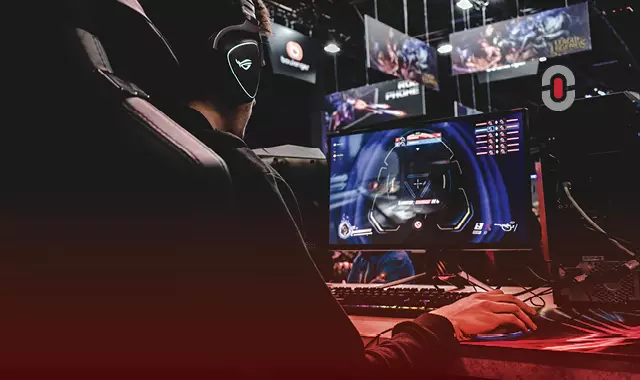The world of competitive gaming, commonly known as e-sports, has emerged as a cultural and economic phenomenon, with millions of fans globally. From packed stadiums to online platforms that stream intense matchups to millions, e-sports has gone beyond the traditional boundaries, blending the excitement of sports with the strategic depth of gaming. At its core, e-sports is not just about the competition: it’s more about the stories that unfold both within and outside of the game. These narratives are integral to the e-sports experience. As this phenomenon continues to grow, understanding how to craft and convey these stories to a diverse, global e-sports audience becomes more challenging and even demanding.
Development
E-sports are organized, multiplayer video game competitions, particularly between professional players, played individually or as teams. For a long time, these competitions were a part of video game culture but were largely between amateurs until the late 2000s, when the introduction of online streaming media platforms, particularly YouTube and Twitch, enabled a surge in participation by professional gamers and spectators. By the 2010s, e-sports was a major part of the video game industry, with many game developers designing for tournaments and other events.
Historically, e-sports became popular in East Asia at first, particularly in China and
South Korea
South Korea’s involvement in e-sports is nothing short of revolutionary. The country is widely recognized as the epicenter of the e-sports world, having played a pivotal role in the development and popularization of competitive gaming. South Korea’s impact on e-sports is multilayered, encompassing the rise of professional gaming, the establishment of training regimes, the creation of a thriving spectator culture, and significant contributions to the global e-sports infrastructure.
E-sports in South Korea enjoy a level of popularity akin to traditional sports and the fan engagement is tremendous. Major tournaments and league matches are broadcast on dedicated e-sports television channels, such as OGN and SPOTV Games, as well as online streaming platforms like Twitch and AfreecaTV. These broadcasts feature professional commentators, analysts, and high production values, making them highly engaging for viewers. There are several reasons for the rise of e-sports, namely in South Korea: the early adoption of technology and Internet infrastructure, the PC bang (internet cafe or LAN gaming center in South Korea) culture, the government support and institutionalization, the corporate investments and sponsorship, etc. South Korea is undeniably at the forefront of the global e-sports industry, being a leader in the fields of player performance, infrastructure, cultural integration, and innovation.
And now let’s discuss the importance and meaning of
Lore – The Backbone of Video Games
Lore in video games refers to the backstory, setting, and world-building elements that form the narrative foundation of the game. It encompasses the history, culture, characters, and mythology of the game world, providing context and depth to the gameplay. Lore is crucial for creating immersive and engaging experiences, as it gives players a sense of the game’s universe and the motivations behind its characters and events. In this respect, the successful translation of the story plays a crucial role for the understanding and subsequent appreciation of the invented worlds. Creating lore for a global audience in e-sports involves crafting a narrative that is both universally appealing and sensitive to diverse cultural contexts.
There is a great number of pitfalls if a video game falls into the trap of literal translation. It can strip away the deeper meanings and subtleties that are often crucial to understanding a game’s narrative and characters. Cultural references, idioms, and humor do not always have direct equivalents in other languages, and attempting a word-for-word translation can result in awkward or nonsensical text. The original intent of the dialogue or narrative can be lost, leading to confusion or misrepresentation of the characters and storyline – especially when wordplay is involved. Game localization should involve a comprehensive understanding of both the source and target cultures and should include cultural adaptation, contextual understanding, close collaboration with developers, player feedback, and experienced localization teams.
Effective translation in video games involves more than just converting text from one language to another. It requires a deep understanding of both the source and target languages, as well as cultural nuances, gameplay mechanics, and player expectations. Maintaining close communication with the game’s developers and writers helps translators understand the intent behind dialogues and story elements. It’s great if the translators are also gamers and understand the gaming culture and terminology. On the other hand, there is also the concept of transcreation, or creative translation, in e-sports – that is the process of adapting content not just for linguistic accuracy but also for cultural resonance and emotional impact. This involves rewriting and reshaping the original content to fit the cultural norms, preferences, and expectations of the target audience.
Also, translation is extremely important for e-sports broadcasting which has become a global phenomenon, with millions of fans tuning in to watch their favorite teams and players compete in real-time. As the industry grows, the need for effective translation and in-game text localization of e-sports broadcasts has become increasingly important. This ensures that content is accessible and engaging for a diverse, international audience.
Let’s see some examples of super popular e-sports video games, offering diverse perspectives for future development and having built strong international brand identities:
League of Legends
 League of Legends was developed and published by Riot Games in 2009. Inspired by Defense of the Ancients, a custom map for Warcraft III, Riot’s founders sought to develop a stand-alone game in the same genre that subsequently turned into one of the world’s largest e-sports. For the 2019 and 2020 League of Legends World Championship finals, Riot Games reported 44 and 45 peak million concurrent viewers respectively – outperforming the NBA, the World Series, and the Stanley Cup in 2016.
League of Legends was developed and published by Riot Games in 2009. Inspired by Defense of the Ancients, a custom map for Warcraft III, Riot’s founders sought to develop a stand-alone game in the same genre that subsequently turned into one of the world’s largest e-sports. For the 2019 and 2020 League of Legends World Championship finals, Riot Games reported 44 and 45 peak million concurrent viewers respectively – outperforming the NBA, the World Series, and the Stanley Cup in 2016.
Counter-Strike
Counter-Strike (CS) is a series of multiplayer tactical first-person shooter video games. The original Counter-Strike was followed by Counter-Strike: Condition Zero, developed by Turtle Rock Studios and released in March 2004. The fourth game in the main series, Counter-Strike: Global Offensive, was released by Valve in 2012 for Windows, OS X, Xbox 360, and PlayStation 3. Namely Global Offensive is an e-sports hit. The advent of video game streaming services such as UStream, Justin.tv, and Twitch increased its popularity. In October 2015, a number of professional e-sports organizations with Counter-Strike teams even announced the formation of a trade union that set several demands for future tournament attendance.
Valorant
Valorant is a free-to-play first-person tactical hero shooter, developed and published by Riot Games, for Windows. In November 2020, Riot Games announced the first Valorant Champions Tour. However, while the upcoming (in a few days) e-sports World Cup in Riyadh, Saudi Arabia, is set to feature over 20 of the biggest games across the globe, Valorant won’t be one of them, because The World Cup, which will run for eight weeks, currently clashes with the schedule of the VALORANT Champions Tour (VCT) 2024 schedule.
StarCraft
StarCraft has been a cornerstone of the e-sports scene since its inception, renowned for its complexity, strategic depth, and competitive balance. Released in 1998 by Blizzard Entertainment, “StarCraft: Brood War” quickly became a sensation, especially in South Korea, where it laid the foundation for modern e-sports. “StarCraft II” in 2010 continued to solidify the franchise’s position in e-sports, introducing new audiences and maintaining a balance that kept the game exciting.
And in the end, let’s check one good example of localization in e-sports. CROSSFIRE, a tactical first-person shooter and one of the most popular games in China and South Korea, is also attempting to grow in other countries, such as Brazil. And while the game viewership outside of China is still a work in progress, the focus on creating greater ecosystems has led to Brazilian player Goken signing for a Chinese team at the beginning of 2024. Unfortunately, many games can’t localize successfully for a number of reasons, but the good examples in recent years are more and more.
Conclusion
Effective storytelling in e-sports involves more than simply translating words: it requires cultural adaptation, sensitivity to local norms, and building emotional connections across different audiences. Games like League of Legends, Overwatch, Counter-Strike, Fortnite, and Crossfire are setting a good example by mixing global diversity with real, authentic stories and characters.
E-sports create a sense of community among fans. As e-sports keeps blowing up, focusing on nailing the IPs stories will turn it into a global cultural phenomenon where every player can dive into epic tales that cross all borders and languages.
